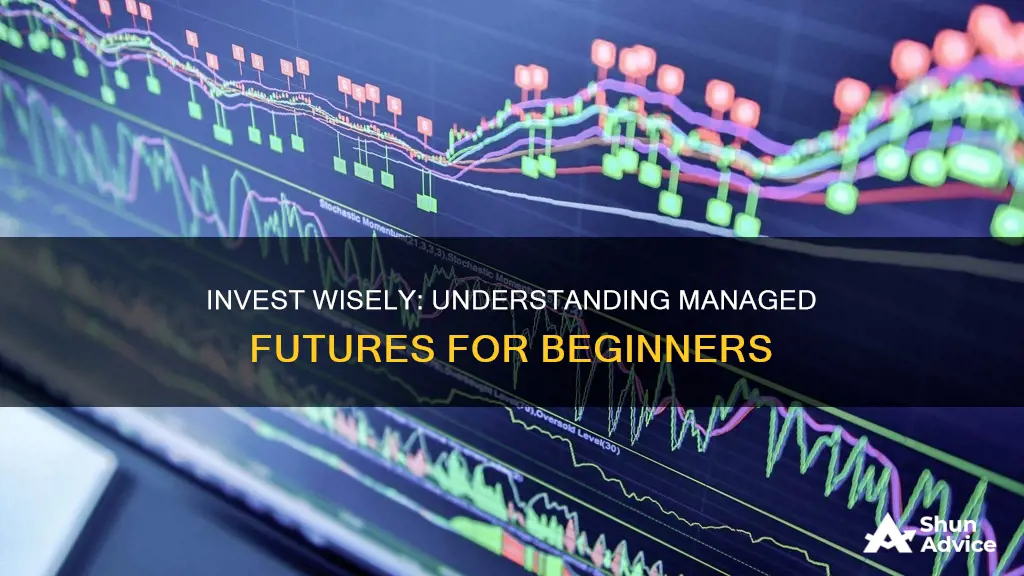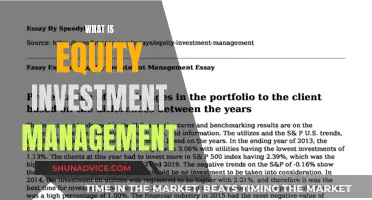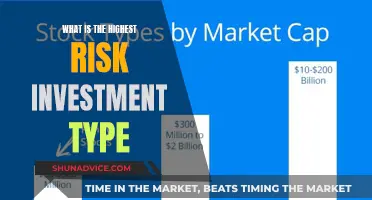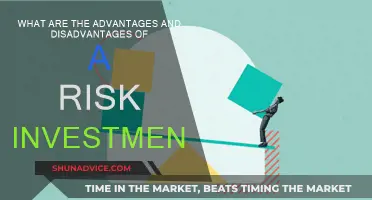
Managed futures are an alternative asset class that allows investors to access global futures markets through a professional known as a Commodity Trading Advisor (CTA). CTAs develop unique investment strategies, from trend-following to market-neutral approaches, and trade highly liquid, regulated, exchange-traded instruments and foreign exchange markets. Managed futures have grown in popularity as investors seek alternatives to traditional assets, with assets under management (AUM) increasing from $40 billion in 2000 to nearly $250 billion in 2010, and surpassing $300 billion in recent years. This paragraph will explore the key features, benefits, and considerations of investing in managed futures.
| Characteristics | Values |
|---|---|
| Definition | A type of hedge fund strategy where a professional manager assembles a diversified portfolio of futures contracts. |
| Type of Investment | Alternative investment |
| Who Manages It | Professional investment management companies known as Commodity Trading Advisors (CTAs) |
| Who It's For | Everyday investors |
| Investment Options | CTAs provide investors with flexible investment options that are traded on over 150 global financial and commodity markets. |
| Investment Portfolio | Agricultural commodities, energy products, metals, interest rates, equities, and foreign and domestic currencies. |
| Funding Requirements | Most CTAs require a minimum investment level, which typically falls between $25,000 and $5,000,000. |
| Notional Funding | Investors can leverage their managed futures accounts. The funded amount acts as a good faith deposit for the full value of the account. |
| Management Fee | The first fee, which provides compensation for a CTA's investment management services, generally ranges from 0% to 3% annually. |
| Incentive Fee | The second major fee, which motivates the CTA to maximize performance, usually falls between 20% and 30% of investment profits. |
| Disclosure Document | A CTA's disclosure document outlines important information about managed futures investments, including risk factors, fees, background information, trading methodologies, and performance history. |
| Tax Advantages | Gains are taxed as if they are made up of 60% long-term capital gains and 40% short-term capital gains, resulting in a lower tax rate for investors. |
| Benefits | Diversification, reduced portfolio risk, enhanced portfolio returns, profit potential in various economic environments, security, transparency, and liquidity. |
What You'll Learn

How Commodity Trading Advisors (CTAs) work
Commodity Trading Advisors (CTAs) are individuals or firms that provide advice and services related to trading in futures contracts, commodity options, and/or swaps. They are responsible for the trading within managed futures accounts and are usually regulated by the US federal government. CTAs must register with the Commodity Futures Trading Commission (CFTC) and join the National Futures Association (NFA).
CTAs act as asset managers, following investment strategies that utilise futures contracts and options on a wide range of physical goods and their derivatives. The three main styles of investment employed by CTAs are technical, fundamental, and quantitative. Technical traders analyse chart patterns and employ computer software to follow price trends and execute trades. Fundamental traders attempt to forecast prices by analysing supply and demand factors, while quantitative traders use statistical analysis to make predictions.
CTAs develop unique investment approaches, from trend-following strategies that aim to profit from market changes to market-neutral approaches that are more conservative. They trade on many exchanges globally, including CME Group, Eurex, and Intercontinental Exchange (ICE).
CTAs are compensated through management fees, calculated as an annual percentage of equity in the fund, and incentive fees, which are a percentage of new trading profits. Management fees are generally between 0 and 2%, while incentive fees are typically between 20 and 30% of investment profits.
CTAs must provide a disclosure document (D-Doc) that outlines all potential risks and required fees, as well as background information, trading methodologies, and performance history. These documents are critical for investors to understand before making investment decisions.
Saving Plans: The Benefits of a Conservative Financial Strategy
You may want to see also

Understanding the fee structure
The first is the management fee, which compensates the CTA for their investment management services. This fee is usually paid annually and ranges from 0% to 3% of the total investment. It is typically deducted from the investor's account on a prorated, monthly basis. The specific percentage depends on the investment program and the CTA's level of experience. Some CTAs may choose to waive the management fee in favour of the second fee.
The second fee is the performance or incentive fee. This fee is charged by all CTAs and usually ranges from 20% to 30% of the investment profits. This fee provides the CTA with an incentive to maximise performance and profit as they only receive this fee when the investor makes a profit. The incentive fee acts as the CTA's main source of income.
When a CTA applies a high watermark to an investor's account, they will only receive the incentive fee when the account value exceeds its previous highest value. If the investment drops in value, the CTA must bring it back above the watermark before receiving any further incentive fees. This ensures that CTAs only receive incentive fees on net new profits.
It is important to carefully review the CTA's disclosure document, or D-Doc, which outlines all the fees associated with the investment, as well as the risks and the CTA's background and performance history.
Savings or Investments: The Best Way to Utilize Your 100K
You may want to see also

The benefits of managed futures
Managed futures are a type of hedge fund strategy. They are a subclass of alternative investment strategies used by large funds and institutional investors to achieve both portfolio and market diversification. Managed futures are operated by Commodity Pool Operators (CPOs) and Commodity Trading Advisors (CTAs).
Diversification
Managed futures offer highly diverse investment opportunities in terms of both geography and product. They can be traded in over 150 financial and commodity markets worldwide, including agricultural products, metals, energy products, equities, currencies, stock indexes, etc. This inherent diversity allows investors to reduce overall portfolio risk and increase returns.
Non-directionality
Managed futures strategies are non-directional, meaning they have the ability to profit from increasing or decreasing values/prices without restriction. Managers can profit equally from long or short positions, without the restrictions or additional costs associated with traditional securities.
Non-correlation
Managed futures have historically exhibited low correlation to traditional investments and other alternative asset classes such as stocks, bonds, and real estate. This is due to the ability of managed futures managers to dynamically enter long or short positions across various markets without taking on systematic exposure to an asset class (beta).
Liquidity
Managed futures firms transact in the deepest, most liquid markets globally. The growth in the number of contracts available and the volume of contracts traded has made managed futures an efficient and reliable marketplace. There are hundreds of liquid futures products across the globe, and a large portfolio of managed futures positions can be easily established or liquidated if necessary.
Transparency
Exchange-traded futures and interbank foreign exchange prices are continuously updated and made available to the public. The managed futures industry also reports to regulators, making the industry itself transparent and accountable. Managed accounts offer complete transparency, giving investors updated and full knowledge of account status and value.
Cash Efficiency
Futures contracts trade on margin, which means investors only need to pay a fraction of the overall value of the contract upfront. This allows investors to increase their exposure without borrowing (financial leverage) and benefit from cash efficiency without borrowing capital.
Schwab's Investment Management Services: What You Need to Know
You may want to see also

How to choose a managed futures program
Managed futures are considered an alternative investment and are often used by funds and institutional investors to diversify their portfolios. Managed futures are portfolios of futures contracts that are actively managed by professionals known as Commodity Trading Advisors (CTAs).
Investment Strategies
CTAs employ various investment strategies, including trend-following and market-neutral approaches. Trend-following strategies aim to profit by going long or short based on market trends, while market-neutral strategies focus on profiting from spreads and arbitrage created by mispricing. When choosing a CTA, ensure their investment strategy aligns with your risk tolerance and investment objectives.
Track Record and Performance
Review the CTA's historical returns and performance metrics to gauge their success in different market conditions. Look for metrics such as annualised rates of return, drawdowns, and risk-adjusted returns. Understand that past performance does not guarantee future results, but it can give you insights into the CTA's ability to navigate different market environments.
Fees and Costs
Managed futures investments typically incur two main types of fees: management fees and performance (or incentive) fees. Management fees compensate the CTA for their investment management services and usually range from 0 to 2% annually. Performance fees, on the other hand, are a percentage of the investment profits and motivate the CTA to maximise returns. These fees can impact your net returns, so carefully review the fee structure before making a decision.
Regulatory Compliance
CTAs are regulated by the Commodity Futures Trading Commission (CFTC) and must register with the National Futures Association (NFA). Ensure the CTA you choose is compliant with regulatory requirements and has a good reputation in the industry. Review their disclosure documents, which outline their trading strategies, fees, and potential risks associated with the investment.
Minimum Investment Requirements
Most CTAs have minimum investment requirements, which can range from USD25,000 to USD5,000,000 or more. Some CTAs may also require a minimum net worth or income level. Consider your financial situation and whether you can meet the funding requirements before selecting a managed futures program.
By carefully evaluating these factors and conducting thorough due diligence, you can make an informed decision when choosing a managed futures program that aligns with your investment goals and risk tolerance.
ESG Investing: Portfolio Value and Long-Term Impact
You may want to see also

The tax advantages of managed futures
Managed futures are a type of hedge fund strategy that offers investors several benefits, including tax advantages. While the tax rules surrounding futures trading are complex, there are some clear advantages to trading in futures over other instruments like equities or ETFs.
Firstly, under Section 1256 of the U.S. Internal Revenue Code, capital gains and losses on futures trading are taxed at 60% of the long-term capital gains rate and 40% of the short-term capital gains rate. This means that a trader can benefit from the more favourable long-term tax rate, which is usually lower than their standard income tax bracket, even if the contract was held for less than a year. For example, if a trader is in the 30% income tax bracket and reports a $10,000 profit on trades for the year, $6,000 of that profit would be taxed at 15% (the long-term capital gains rate), while the remaining $4,000 would be taxed at 30% (their regular tax rate). This results in a total tax of $2,100. In comparison, if they had made the same profit trading equities, their entire profit would be taxed at 30%, resulting in a total tax of $3,000. Thus, the futures trader benefits from a 9% tax efficiency in this scenario.
It is important to note that the long-term capital gains tax rate varies depending on taxable income and filing status, but it is typically 15% for most futures traders. The maximum long-term capital gains rate is 20%, which is still often lower than an individual's standard tax bracket rate.
Additionally, futures traders do not have to worry about wash-sale rules, which apply to equity traders. Wash-sale rules state that losses on "substantially identical" securities cannot be carried forward within a 30-day time span. This means that if an individual sells a security at a loss, they cannot claim that loss on their taxes if they purchase a similar security within 30 days.
Overall, the tax advantages of managed futures can provide significant benefits to investors, especially when compared to trading in more traditional asset classes.
Green Finance: Haven's Investment Management Strategy
You may want to see also
Frequently asked questions
Managed futures are a type of hedge fund strategy where a professional manager, also known as a Commodity Trading Advisor (CTA), assembles a diversified portfolio of futures contracts. CTAs trade highly liquid, regulated, exchange-traded instruments and foreign exchange markets.
Managed futures are managed by professional investment management companies known as CTAs. Most CTAs require a minimum investment level, which typically falls between $25,000 and $5,000,000. It is up to the client to choose which program(s) they would like to invest in or add to their existing investment portfolio.
Managed futures offer a diversified investment opportunity, with the potential to lower overall portfolio risk and enhance overall portfolio returns. They also provide the opportunity to profit during all economic environments and offer broad diversification opportunities.







